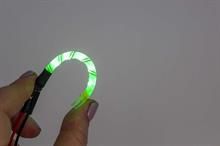
Some combinations of three anti-microbial agents widely employed in textile industries—iodopropyl butylamine (IPBC), zinc pyridyl sulfide (ZPT) and octyl isothiazolinone (OIT)—elicit additive effects on both Staphylococcus aureus and Escherichia coli, according to Chinese researchers.
Notably, an equivalent ratio of IPBC, ZPT and OIT with a certain concentration exhibited inhibition rates above 99 per cent against both bacterial strains, the research team from the department of gastrointestinal surgery at the Second Affiliated Hospital of Zhejiang University School of Medicine in Hangzhou and the Zhejiang Hexin New Material Co. Ltd, concluded.
The team published its findings in the journal ‘Biointerphases’ recently.
The team studied the individual, compounded and synergistic anti-microbial effects on S. aureus and E. coli bacterial strains.
Using a finishing process, the researchers integrated a specific combination of these agents into nylon, a fabric that is extremely tough to turn anti-microbial, and found that it could produce additive anti-microbial effects without reducing its whiteness or durability.
“This work offers a straightforward and effective approach to textile antimicrobial finishing,” said author Yi Huang.
The authors hope to investigate more compounded anti-microbial agents and apply them in practical textile production.
Fibre2Fashion News Desk (DS)

